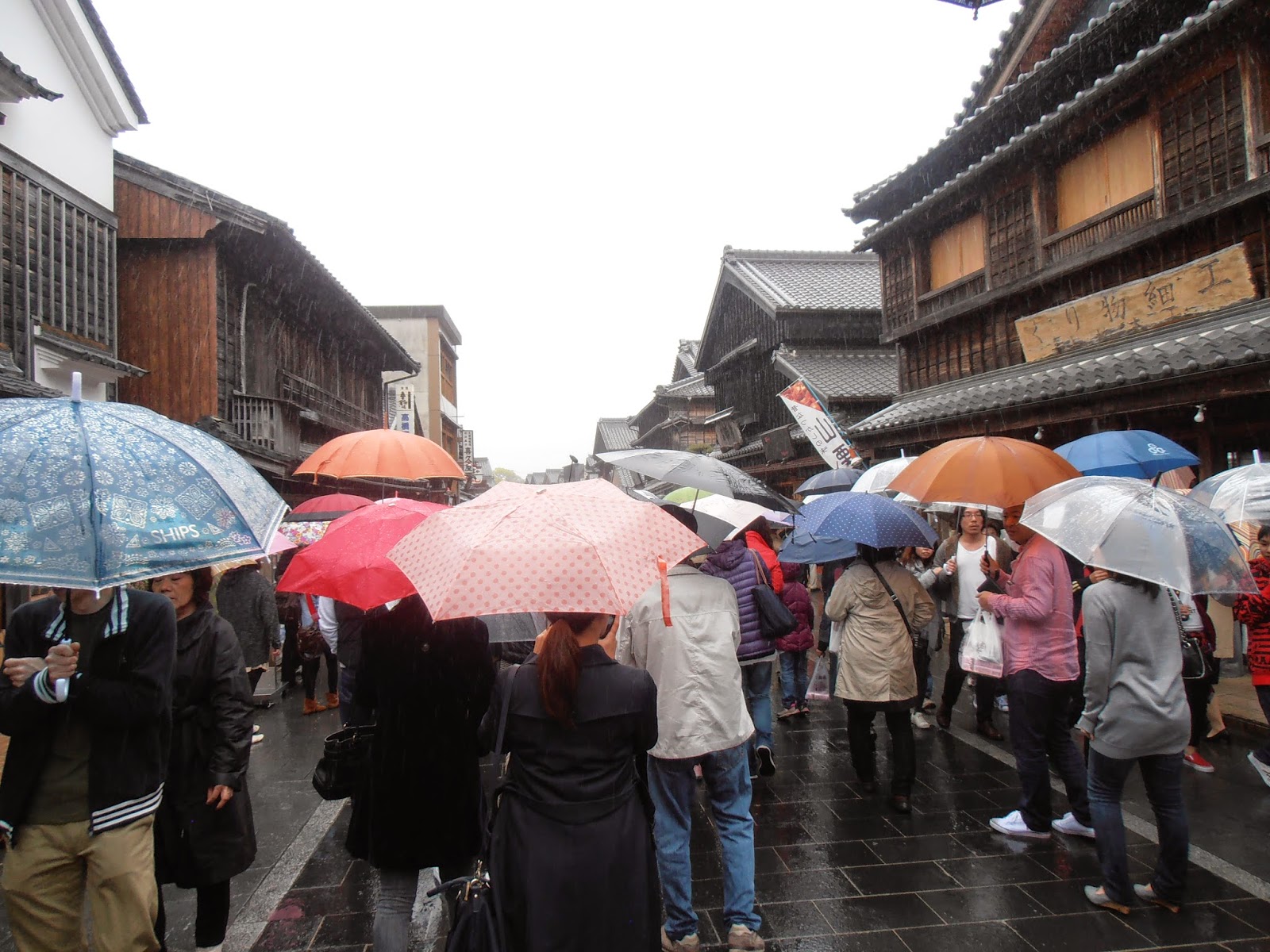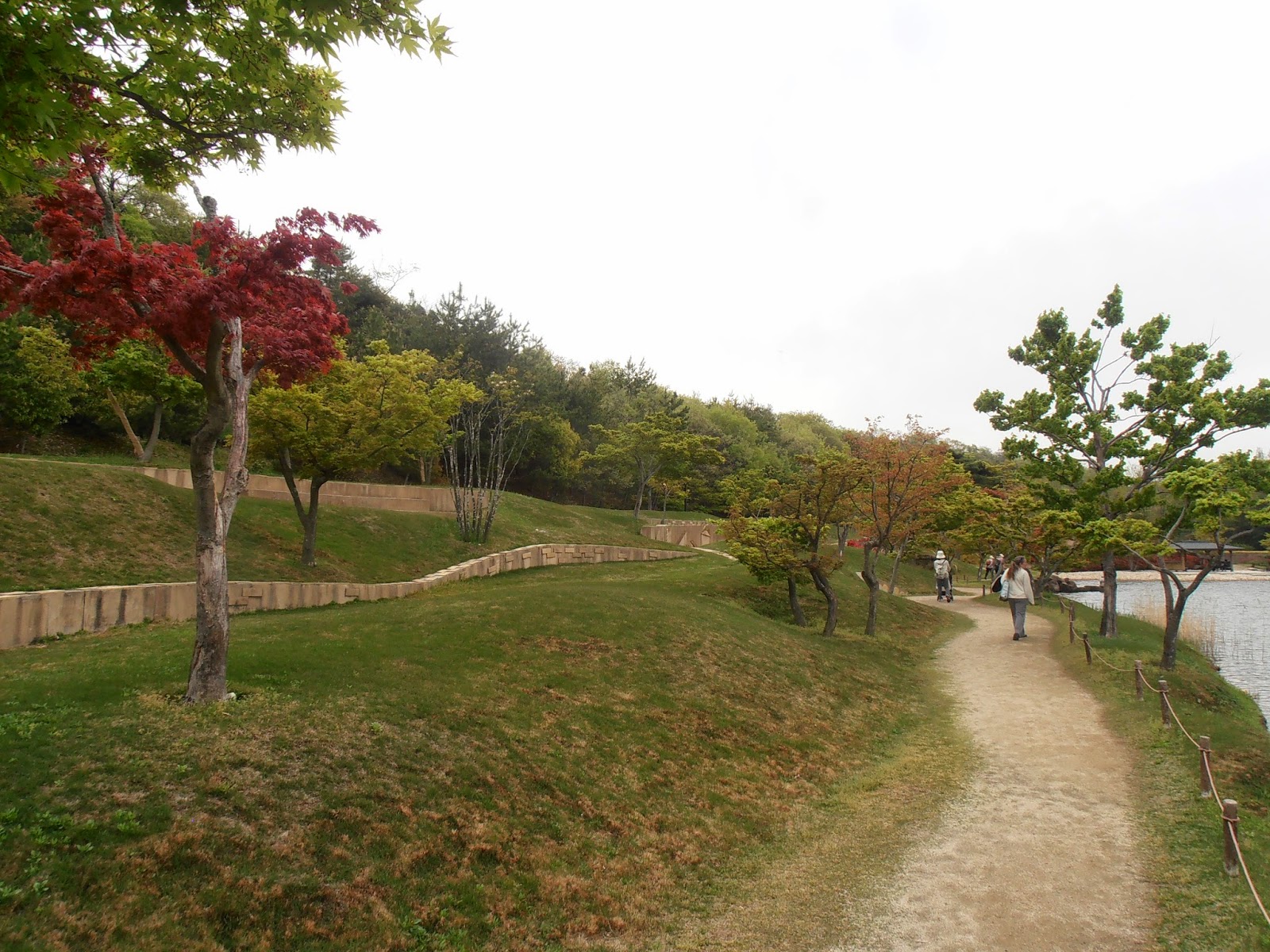Japan, the journal: day 9-10
Day 9
The tone in the apartment in the morning was full of energy. With a toddler running around and playing, there was plenty of activity. He danced to his favourite songs on the children’s TV programs while we talked with his daddy Noboru, and then we all had breakfast together. Soon, the time came when we had to go. Noboru dropped us off at the Nagoya train station on his way to work. Day 9 was to be a day to explore on our own. From the landmark giant mannequin named Nanachan that Maki had shown us when we arrived three days before, we found our way to the bus terminal.
We were to take a bus to Ise in Mie prefecture for a self-guided tour of Ise Jingu, a complex of Shinto shrines. The bus ride was about two hours. Thankfully, the bus was comfortable and not too crowded.
Mist was rising in the mountains that we passed on the way, giving an extra dimension to the layers of green and beautiful scenery.
In this smaller town, there was much less English signage, so our first task was to coordinate the various maps and landmarks at our disposal in order to ensure that we would be able to find our way back to the bus station for the return trip. Once we thought we had our bearings, we went looking for a public restroom. They were not as evident here as they often were at other tourist destinations we had visited, so we resorted to asking directions. The shops in Ise are generally directed at visitors to the shrines, so walking down the street is very similar to walking through an open air market. A steady stream of people flows past, and wares are displayed proudly in front of each store. Many shops sell foods and souvenirs. We stopped at one, bought some rice cakes and fish, and used some of my limited Japanese to ask for our directions. Although I understood the directions we were given, we still had trouble finding it. When we finally gave up and asked a second shopkeeper, we were embarrassed to find the washroom was only steps away, hidden in a little passage we had overlooked.
It was approaching lunch time, so we stopped in an inviting little noodle shop. Udon and beef dishes were the specialties here (we learned that Mie is known for raising excellent beef), and they were cooked by a friendly chef behind a little counter.
All our time spent in the mazelike streets had emboldened us. We decided to complete our special mission before going up the hill to the shrines. Maki had asked if we could pick up some special ingredients for her and Okaasan, a particular brand they usually have to order through the internet, but one that would be available in one shop in that maze. We asked our friendly chef if he knew the location of the shop, and he was unsure, but supplied a very general suggestion that ultimately led us to our goal. Back in the streets, we wound our way back to the general area he had indicated.
The rain fell steadily, but people didn’t let it stop them from enjoying the town. Their umbrellas floated down the street like jellyfish caught in a current.
At last, we spotted the store!
We matched up the name on the packaging with the one we were seeking and made the purchase.
On our way back through the town, we had a brush with celebrity. We can’t say for certain exactly who this is, but we have some idea. At the time, we only knew that she was accompanied by an entourage and followed by cameras and microphones. She stopped and asked John where he had eaten lunch.
After the hubbub in the town, it was nice to go up into the shrine complex where the mood was peaceful. The steady rain further added to the magical atmosphere. A large torii marked the entrance.
Ise Jingu is a complex with two major shrines dedicated to Amaterasu-Omikami and to Toyouke no Omikami. The public is not allowed inside the two big shrines, as they are essentially for the Imperial family alone. 123 other shrines make up the rest of the complex, far too many to see in one day. As Shinto is a religion that is very connected to the natural world, these shrines are nestled in scenes of natural beauty, in gardens and forest, near the river. The walk up the slope, among the ancient trees, through more tori, all the while listening to the patter of raindrops on our umbrellas was very moving.
Before long, our visit was over, and we had to return to the bus stop.
Public baths at a nearby spa rounded out the evening. In Japan, traditional baths (ofuro) involve washing outside the tub, then soaking in deep hot water. It is very relaxing, and the custom of bathing with others is an old one, a luxurious and social event born in a time when most individual houses didn’t have their own baths . Today, public baths and spas are a treat to enjoy, often with a variety of indoor and outdoor tubs, mineral baths and whirlpools. The men went one way, and the women and Takeru went the other to experience this typically Japanese practice.
Day 10
On our last full day in Japan, we slept later than normal and enjoyed a leisurely breakfast. We presented Maki’s family with the gifts we had brought from America. Then, Noboru went off to work on his bicycle. The rest of us went to Moricoro Park.
This park was the site of the 2005 expo, a World’s Fair with the theme “Nature’s Wisdom”. People from all over the world came to visit the exhibitions. Now, it is a pleasant park with many attractions.
A ferris wheel.

A pool and waterpark, and an ice rink where figure skaters often come to practice.
An elaborate clock with dancing figures as the clock strikes the hour.
Paths, ponds, flowers and gardens.
Amid the trees, a tea house offered green tea and traditional sweets along with the pleasant views.
It was particularly interesting to see the variety of Japanese vehicles, many of which we had never seen in America.
We thoroughly enjoyed watching the Chunichi Dragons play the Hanshin Tigers. Although they didn’t win this time, it was a fun evening. Since we had taken Maki to see the Chicago Cubs when she visited us, it seemed like a nice exchange of experiences.
Travel Day
There was a certain amount of craziness as we departed from Japan. Rushing to the platform to jump aboard the Shinkansen that would take us back to Tokyo, finding the airport limousine bus, and waiting to check in for our flight just as the airline’s computers had crashed were all hurdles on our way back home. But the day began with the comfort of family as we spent our last morning with Maki, Noboru and Takeru. We talked about the future when Takeru may be able to visit us in America. A call from Otoosan and Okaasan gave us another opportunity to say goodbye and to promise that despite the distance, we would be connected forever.



















































Comments
Post a Comment